When the skies open up, and the rain starts to pour, construction doesn't come to a standstill. In fact, it’s the high-quality rain gear that shields the workers, enabling them to carry on with their tasks undeterred. Rain gear for construction needs to be more than just waterproof. It also must be durable, tear-resistant, and strong enough to withstand the rigors and abrasive nature of the construction environment.
In the quest for the ideal rain gear, understanding the fabric's fundamentals, the science of waterproofing, and tear resistance is crucial. Moreover, you need to balance these features against aspects such as comfort, fit, safety, maintenance, and above all, the environmental impact. As we pave the way through this insightful discussion, you'll find that the perfect rain gear is not that elusive after all. It just takes a tactical approach, deep understanding, and prudent decision-making to spot the right rain gear in the market.
This article will arm you with the knowledge and tips you need. Grab a cup of coffee, sit back, and let's explore the astounding world of construction rain gear!
The Necessity of High-Quality Rain Gear in Construction
Imagine being a construction worker in the midst of a challenging outdoor project when suddenly the skies open up and it begins to pour. It’s not simply the discomfort of being drenched that's a concern; rainy conditions on a construction site can increase the risks of injury and delays in project completion. Thus, having high-quality rain gear becomes more than just a desire—it's a necessity.
The Challenges of Working in Wet Conditions
Working in wet conditions presents a unique set of challenges. Aside from the obvious discomfort, it can pose safety risks and impact work efficiency. Here are some of the difficulties construction workers face when the weather turns wet:
- Slip and fall risks: Rainwater can make surfaces slippery, increasing the likelihood of accidents.
- Material damage: Many construction materials are susceptible to water damage, affecting the quality and durability of the build.
- Visibility issues: Rain can greatly reduce visibility on the site, increasing the risk of accidents and errors.
- Health risks: Long hours of working in the rain can lead to hypothermia, decreased immune function, and other health problems.
The Importance of Durability
Given the complexities involved, the requirement for high-quality, durable rain gear becomes apparent. This gear is essential not just for the comfort of the construction workers but for their safety as well. So, how do we define 'durable' when it comes to rain gear?
- Water resistance: High-quality rain gear will offer excellent water resistance to keep the wearer as dry as possible, even in heavy downpours.
- Durability: The rain gear should be made of sturdy materials that can withstand the harsh conditions of a construction site.
- Comfort and fit: Good rain gear should be comfortable to wear for prolonged periods and should fit well to allow for ease of movement on the site.
- Visibility features: Many high-quality rain gear options include reflective strips or other visibility features, an important aspect when working in poor light conditions.
Investing in quality rain gear is a crucial element in ensuring that construction workers can safely and effectively carry out their duties, no matter the weather. This investment can result in fewer injuries, less sick leave, and potentially, a more steadfast progression towards project completion.
And remember, while there is a cost associated with purchasing high-quality rain gear, it's important to consider the long-term benefits. The additional expense can more than pay for itself in the enhanced safety and productivity it offers on the building site.
Understanding the Basics of Waterproof and Tear-Resistant Materials
Water doesn't have to be your enemy. Whether you're an outdoor enthusiast or a casual city dweller, having waterproof and tear-resistant materials can greatly improve your experience and peace of mind. Let's navigate the essentials of these handy materials, delve into their science, and understand how they help us in our everyday lives.
What Makes a Material Waterproof?
Waterproof materials are ubiquitous and might be closer to your daily life than you think! They are present not only in raincoats and umbrellas but also in building materials, virtually anywhere protection from water is needed.
But what exactly makes a material waterproof?
Waterproof implies that water simply doesn't pass through the material. This resistance is usually achieved by the application of a protective coating or treatment, or by using a type of material that is naturally impervious to water.
Key characteristics of waterproof materials include:
- Low Absorbency: Any material that hopes to be waterproof must possess low absorbency. Simply put, it cannot absorb much water.
- High Resistance: The material must resist water penetration, even under constant exposure or pressure.
- Kind of Surface: Surfaces are typically made smoother as microscopic cracks and pores can potentially allow water to seep through.
"Water always finds a hole. When it comes to waterproofing, every detail counts!"
The Science behind Tear-Resistant Materials
Simply put, a tear-resistant material doesn't easily rip or become damaged when force is applied. It's all about their strong intermolecular bonds!
These materials differ from everyday materials because their individual molecules are linked together by strong bonds or are organized in a way that makes it difficult for a tear to progress. When a force is applied, these links distribute the force throughout the material, reducing the chance that it will cause a tear.
The mechanism of tear resistance often involves:
- Polymer Chains: These materials typically consist of long polymer chains. The more entangled these chains are, the more tear-resistant the material.
- Added Reinforcements: Inclusions like nylon fibers can be added to increase tear resistance as these elements provide additional tensile strength.
- Material Morphology: The arrangement of the material's elements and their density also play a substantial role in determining tear resistance.
From hiking boots to rugged notebooks, materials that resist tearing significantly extend the lifespan of products.
Using waterproof and tear-resistant materials can transform your everyday experiences, and knowing how they function helps you appreciate the science that makes our lives better. Understanding these materials is not only engaging but also helps you make informed decisions about products that best suit your lifestyle.
Comparison of Different Types of Waterproof and Tear-Resistant Materials Used in Rain Gear
Rain gear effectiveness doesn't just hinge on its design; the material it's made from is equally crucial. Various waterproof and tear-resistant materials are used, each having unique characteristics that can impact the gear's overall performance in wet weather situations. In this article, we shed some light on the frequently used materials in rain gear - Polyurethane, Polyvinyl Chloride, Polyester, and Nylon. We'll compare these and discuss their advantages and disadvantages.
Polyurethane vs. Polyvinyl Chloride
Polyurethane and Polyvinyl Chloride, shortened to PU and PVC, respectively, are well-loved materials in the rain gear industry. They both are known for their water resistance, versatility, and durability—in different ways.
- Polyurethane (PU) - Lightweight yet sturdy, Polyurethane is one rain gear material that offers breathability alongside water and wind resistance. It is typically used as a coating over fabrics to enhance their protective qualities. Its breathability sets it apart from PVC and makes it a more comfortable option for prolonged wear.
- Polyvinyl Chloride (PVC) - If you're looking for something rugged and tear-resistant alongside being waterproof, PVC is the one to consider. Found in heavier, industrial-strength rain gear, PVC is famous for its long-lasting properties. However, it lacks breathability, which may make it less comfortable for extended use than PU.
Polyester vs. Nylon
People often mistake Polyester and Nylon as the same, but these two synthetic fibers have different attributes that make them suitable for different types of rain gears.
- Polyester - Polyester is durable, resistant to most chemicals, and typically less expensive than other materials. It's easy to clean and dries quickly, making it an attractive choice for rain gear. However, it's heavier than Nylon and not as breathable.
- Nylon - Among the synthetic fibers, Nylon is championed for its incredible strength, elasticity, and resistance to water, mildew, and tears. Plus, Nylon is lightweight and dries quickly, making it ideal for rain gear. On the downside, Nylon can absorb more water than Polyester in heavy rain, which may make your rain gear feel heavier.
Whether you opt for PU or PVC, Polyester or Nylon, each material has its strengths and weaknesses. The key lies in understanding how these materials function and choosing what material best suits your needs. After all, the highest-quality rain gear is not merely about repelling water; it's also about comfort, durability, and, most importantly, keeping you dry and warm in the rain.
Key Considerations When Purchasing Rain Gear for Construction
When battling the elements on a construction site, the right gear is crucial. It isn't enough to stay dry, the right rain gear needs to be comfortable, safe, and easy to care for. In this section, we'll explore the key elements that ought to be factored in when investing in high-quality rain gear suitable for the construction industry.
Comfort and Fit
The importance of comfort and ideal fit cannot be overstated, especially when you're putting in long hours at a construction site. Working outdoors in inclement weather can be demanding, and ill-fitting rain gear can significantly hinder productivity.
- Size: Ensure that the gear fits well but isn't too tight. Too loose rain gear can snag on tools, while too tight gear can restrict movement. Pieces should comfortably accommodate layers beneath for those colder, rainy days.
- Material: Rain gear that breathes is essential. Look for gear made from materials that are water-resistant and can wick away moisture from sweat and rain, reducing the risk of hypothermia.
- Functionality: Rain gear should have user-friendly features like easily adjustable cuffs, hoods large enough to accommodate hard hats, and plenty of pockets for quick access to essential tools.
Safety Features
In the realm of construction, gear must go beyond keeping you dry—it has to keep you safe on the job as well. Here are some safety factors to look for:
- High visibility: High-vis rain gear enables others to see you, particularly in low-light conditions. Choose garments with reflective strips to heighten visibility.
- Reinforced Seams: Look for gear with fortified seams and heavy-duty zippers that ensure the gear can handle the weight of your tools, and withstand rigorous wear and tear.
- Chemical resistance: Accidental chemical spills can occur, so rain gear with chemical resistance qualities is a great safeguard.
Maintenance and Care
The longevity of your rain gear is determined by how well it is taken care of. High-quality pieces could last several seasons with the proper maintenance.
- Cleaning: Regularly cleaning your gear extends its lifespan. Be sure to follow the care instructions provided by the manufacturer to avoid damaging the fabric.
- Repairs: Small rips and holes may occur over time. Having a repair kit on hand can quickly mend minor damages before they become a major issue.
- Storage: Store your rain gear in a dry, cool place. Never ball it up while it’s still wet as it can lead to issues like mold.
Ultimately, selecting the right rain gear for construction comes down to finding a balance between comfort, safety, and easy maintenance. Remember, the goal is to remain effective and efficient on the job, regardless of the weather conditions.
Additional Features for Enhanced Protection and Durability
The marvels of modern technology have bestowed us with countless features for enhanced protection and durability in countless products, from the smartphone in your pocket to the car you drive. You may not often consider all the intricate details that go into making these items resistant to wear, tear, and damage. The integrity of a thing does not merely depend upon the main material of its construction. Instead, a culmination of thoughtful features escalates its protection and durability levels. Let's delve deeper into the three key features shared by many sturdy goods: sealed seams, reinforced areas, and abrasion resistance.
Sealed Seams
Sealed seams are an integral part of many manufactured products, playing a significant role in procuring a higher degree of water, wind, and dust resistance. This special treatment, often seen in high-quality clothing and camping gear, consists of a thin, rubbery layer applied over the seams, blocking moisture and debris from entering.
- Boosts water, wind, and dust resistance
- Used in high-end clothing and camping gear
- Consists of a thin, defensive layer applied over seams
Reinforced Areas
The concept of reinforcing involves strengthening certain stress-prone areas of a product to enhance its durability. It is common practice to see this in items like backpacks, where you'll often notice additional layers of material around the bottom and straps.
- Increases overall durability
- Common in stress-prone areas like the bottom of backpacks and straps
- Involves adding additional layers of material for strength
Abrasion Resistance
Abrasion resistance is the proficiency of a material to withstand mechanical actions such as rubbing, scuffing, or scratch. This feature is marked as critical in industries like textiles, footwear, and automobile, ensuring the products maintain their aesthetic appeal despite frequent use.
- Helps maintain aesthetic appeal despite repeated use
- Crucial in industries like textiles, footwear, and automobiles
- Enables materials to withstand rubbing, scuffing, and scratching
These features - sealed seams, reinforced areas, and abrasion resistance - actively work in harmony to imbue your everyday items with extraordinary robustness. It's no exaggeration to say that these features significantly enhance a product's lifespan, translating into more value for your investment. So, next time you shop, try to identify these features in your favored goods. You may be surprised how much a small detail can contribute to the overall durability and protection of an item.
How to Assess Whether a Piece of Rain Gear Meets Your Needs
Remember this saying - There's no such thing as bad weather, only unsuitable clothing!
If you're an outdoor enthusiast, or currently live in a region impacted by significant rainfall, it's important to invest in good quality rain gear. An effective piece of rain gear, such as rain jackets, pants, or boots, can determine whether your day will be marked by soggy discomfort or dry delight. But how do you know if a piece of rain gear will meet your needs? Read on to find out!
Checklist of Questions to Ask
Before purchasing any rain gear, it's crucial to ask yourself some key questions. This will ensure that the gear you choose aligns well with your specific needs and that your investment won't go to waste.
- How often will I use it?: If you're an avid hiker, you might need more resilient and feature-packed equipment than someone who just wants to stay dry while running errands.
- Where will I use it?: Gear for city wear, hiking, or industrial work differs in design and durability.
- What features do I need?: Breathability, packability, and insulation are among the aspects to consider depending on the expected use and weather conditions.
- What’s my budget?: The price range for rain gear can vary greatly, so decide what you’re comfortable spending.
By answering these questions, you'll be able to narrow down your options and find the perfect gear for your needs.
Product Testing and Standards
Apart from your checklist, another effective way to assess a piece of rain gear is to consider product testing and standards. Look for gear that has been tested to meet recognized standards for waterproofing and breathability. These are typically mentioned in the product descriptions and indicate the quality and effectiveness of a particular piece of gear.
Likewise, check the product reviews to see the experiences of people who have used it in real rain conditions.
Pro tip: Don't skip trying gear on. Sizes can vary a lot, and a proper fit is essential for comfort and functionality.
In conclusion, assessing whether a piece of rain gear meets your needs doesn't have to be an overwhelming task. With the right questions at hand and an understanding of product testing standards, you should be able to invest in gear that keeps you dry and comfortable, come rain or shine.
Environmental Impact of Waterproof and Tear-Resistant Materials
How vital are waterproof and tear-resistant materials? The benefits are numerous. From weather-resistant clothing and backpacks to waterproof electronics and tear-resistant luggage, these modern materials significantly improve the durability and longevity of everyday products. However, while these utilities come with considerable advantages, we often overlook their environmental implications. As intriguing as the benefits are, the environmental footprints of waterproof and tear-resistant materials are equally worth exploring. Here, we'll dive into the disposal and recycling aspects as well as sustainability considerations of these materials.
Disposal and Recycling Options
Waterproof and tear-resistant materials typically exhibit formidable resilience, primarily designed to endure challenging conditions. Their core characteristics of being impervious to water and resistance to tearing, instigate challenges in waste management. As these materials take an exceptionally long time to break down, they contribute significantly to land and water pollution when discarded irresponsibly.
The recycling options for these materials depend largely on their composition. While some waterproof and tear-resistant materials may be recyclable, the process can be complex. To make things simpler, here's a summary of disposal and recycling options:
- Landfill: The least eco-friendly disposal option for waterproof and tear-resistant materials.
- Recycling: Although a better alternative, it proves difficult due to the unique structural properties of the materials. Specialized recycling facilities can handle these, but availability is often limited.
- Incineration: Though it helps limit landfill waste, this method may release toxic pollutants into the air if not managed carefully.
Sustainability Considerations
While it's critical to handle the disposal and recycling of waterproof and tear-resistant materials responsibly, the sustainability of these materials goes beyond after-use considerations. The manufacturing processes also demand significant scrutiny.
Frequently, harmful chemicals are used in the production of waterproof and tear-resistant materials. For instance, many waterproof fabrics rely on perfluorinated compounds (PFCs), which are not only toxic but also persist in the environment and can bioaccumulate. Other materials utilize plastic polymers, the production of which contributes to greenhouse gas emissions.
Addressing these challenges requires a concerted effort towards sustainable product designing. Creative innovations, like materials developed from natural sources or bio-based alternatives to PFCs, holds promise. What's more, promoting the use of recycled materials can also enhance the sustainability equation.
While the journey towards fully sustainable waterproof and tear-resistant materials is still ongoing, it’s certain that our actions today will significantly impact the environmental future. Understanding the environmental implications of our choices, and opting for more eco-friendly alternatives when available, is a prudent way to contribute to a greener planet.
Conclusion
Choosing the perfect rain gear for construction work involves considering various factors, from the basic waterproof and tear-resistant abilities of the material to additional features for enhanced protection. Examining the comfort, fit, safety features, and maintenance requirements can help you make an informed purchase. However, it's equally important to consider the environmental impact of these materials. Aim to find gear that aligns with your individual needs while causing minimal ecological damage.
As you embark on this quest, you might find a suitable partner in Hurricane Raingear. Recognized for their superior-quality products that prioritize both comfort and durability, the brand offers 100% waterproof and rip-resistant rain gear. Designed with added safety features such as reflective 3M striping and features such as sealed seams and abrasion resistance, their gear is crafted to withstand tough conditions in the field, without compromising on comfort or mobility.
In our rapidly changing world, it's essential to have gear that can cope with varying weather conditions. High-quality, durable, and environmentally friendly options like Hurricane Raingear can play a vital role in ensuring you're well protected, comfortable, and able to perform your best, come what may. Invest wisely in your rain gear, and help shape a safer, more resilient construction industry.
Frequently Asked Questions
-
What are the best materials for waterproof and tear-resistant construction rain gear?
The best materials for waterproof and tear-resistant construction rain gear include Gore-Tex, PVC-coated fabrics, nylon, and polyester blends.
-
Do waterproof and tear-resistant rain gear have different levels of durability?
Yes, waterproof and tear-resistant rain gear can vary in durability depending on the quality of materials used and construction techniques. It's important to choose gear that is specifically designed for construction use and offers high durability.
-
Are there any specific features I should look for in construction rain gear?
Yes, when choosing construction rain gear, look for features such as reinforced stitching, taped seams, adjustable cuffs and hems, multiple pockets for storage, and a hood with a sturdy brim for better visibility during rain.
-
Can I wear waterproof and tear-resistant rain gear in all weather conditions?
While waterproof and tear-resistant rain gear is designed to withstand harsh weather conditions, it's important to consider the temperature and breathability of the gear. In extreme heat, it may be uncomfortable to wear, and in such cases, you may need to explore alternative options.
-
How do I properly care for and maintain my construction rain gear?
To ensure the longevity of your construction rain gear, follow the manufacturer's care instructions, which typically involve regular cleaning with mild detergent, avoiding bleach and fabric softeners, and air drying. Additionally, inspect and repair any tears or damages as soon as possible.



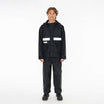
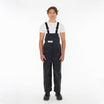
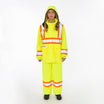
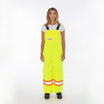
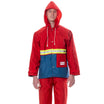
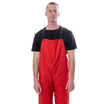
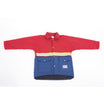
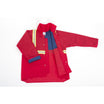
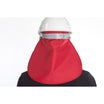

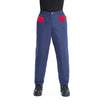
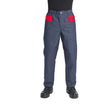
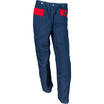
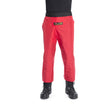
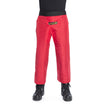
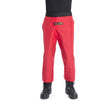
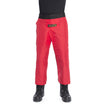
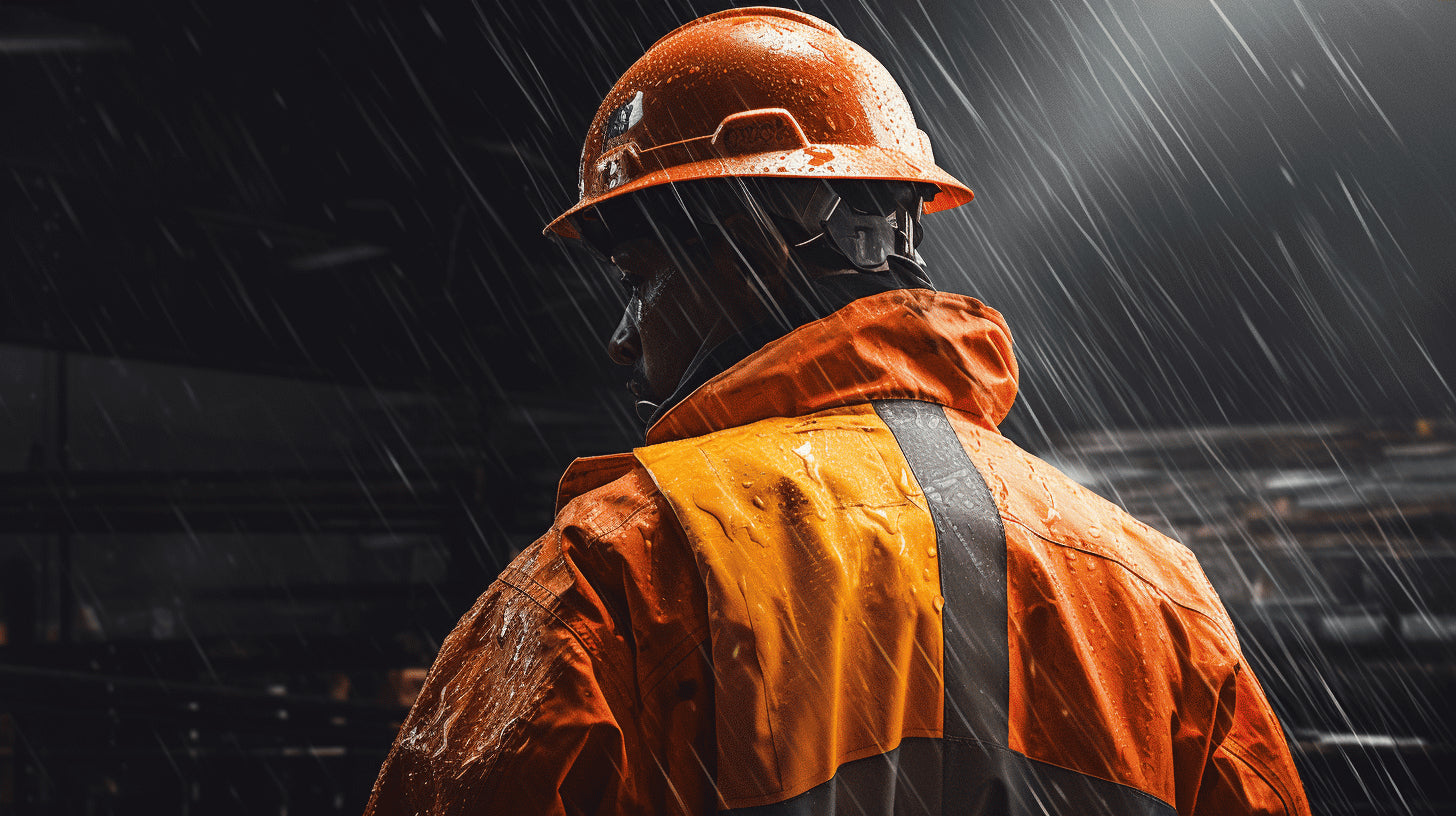
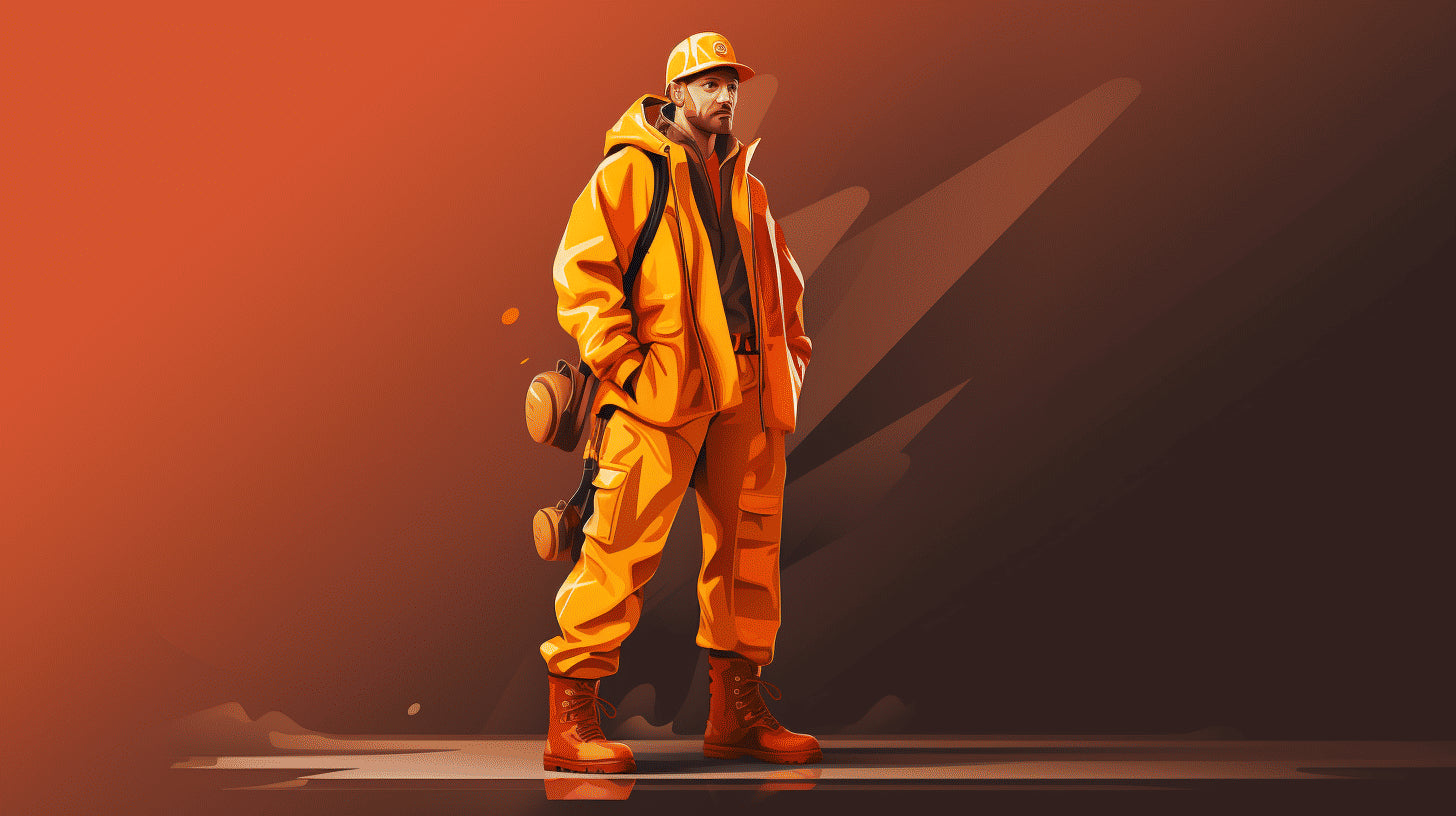
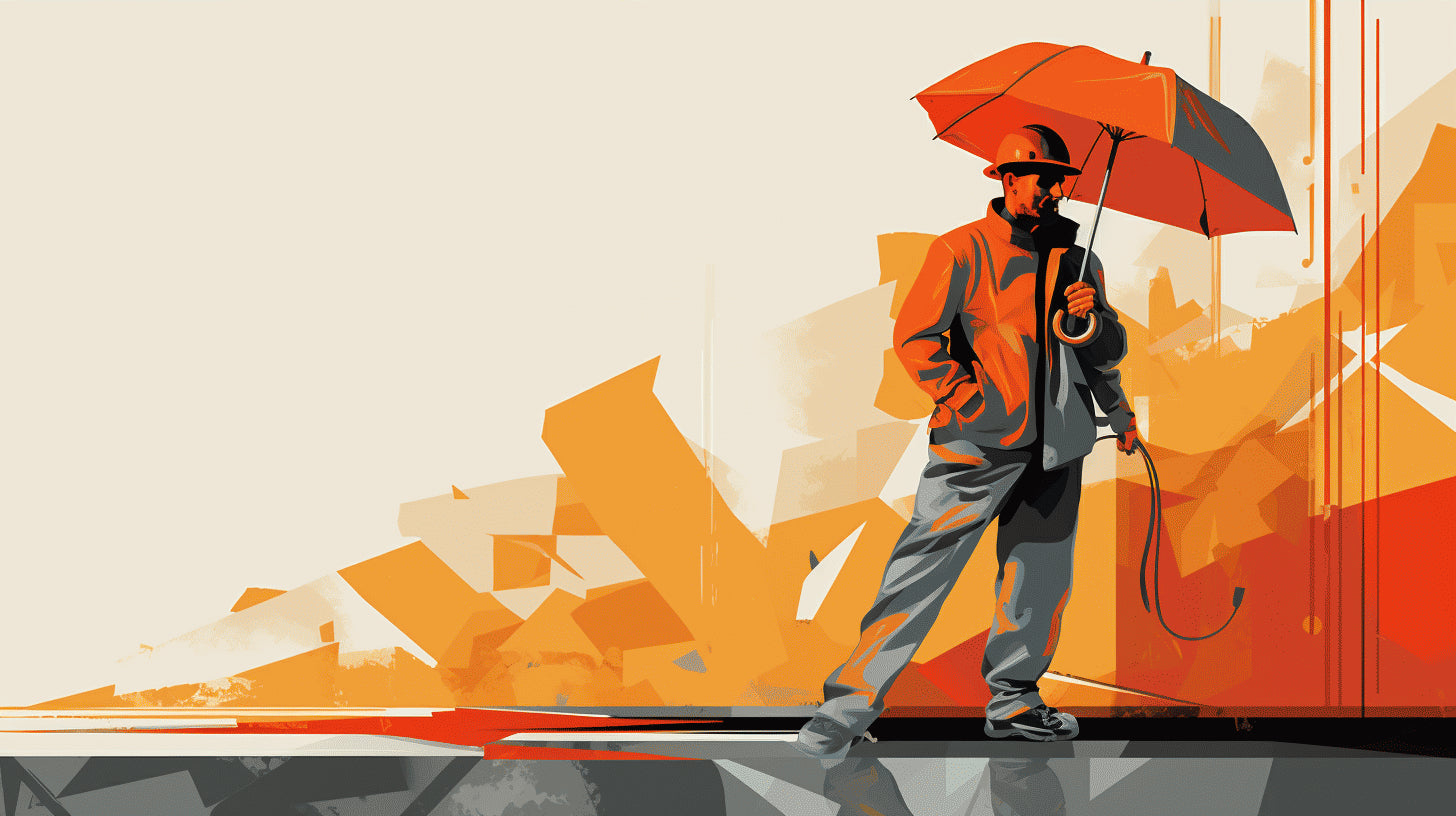
Leave a comment
This site is protected by hCaptcha and the hCaptcha Privacy Policy and Terms of Service apply.